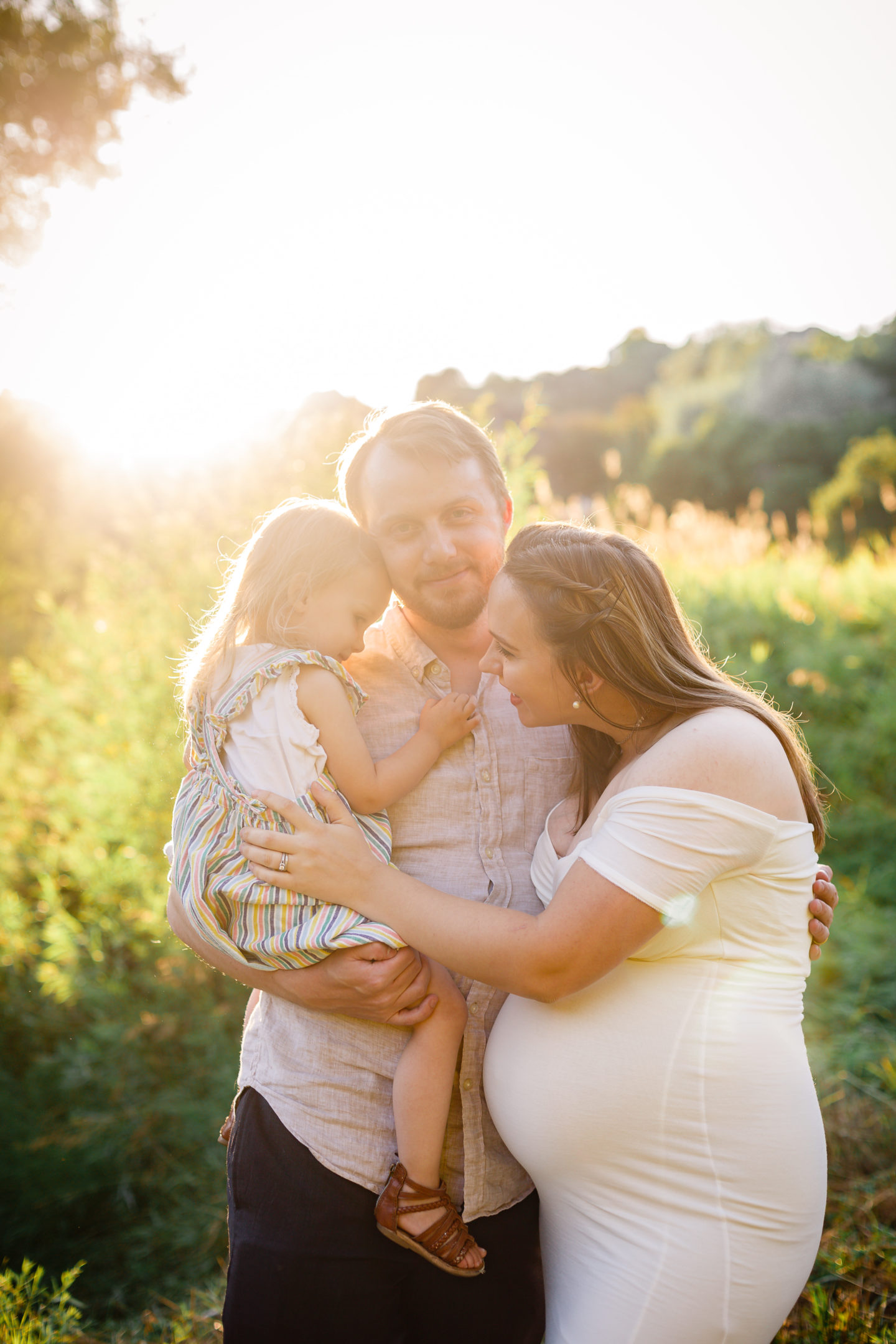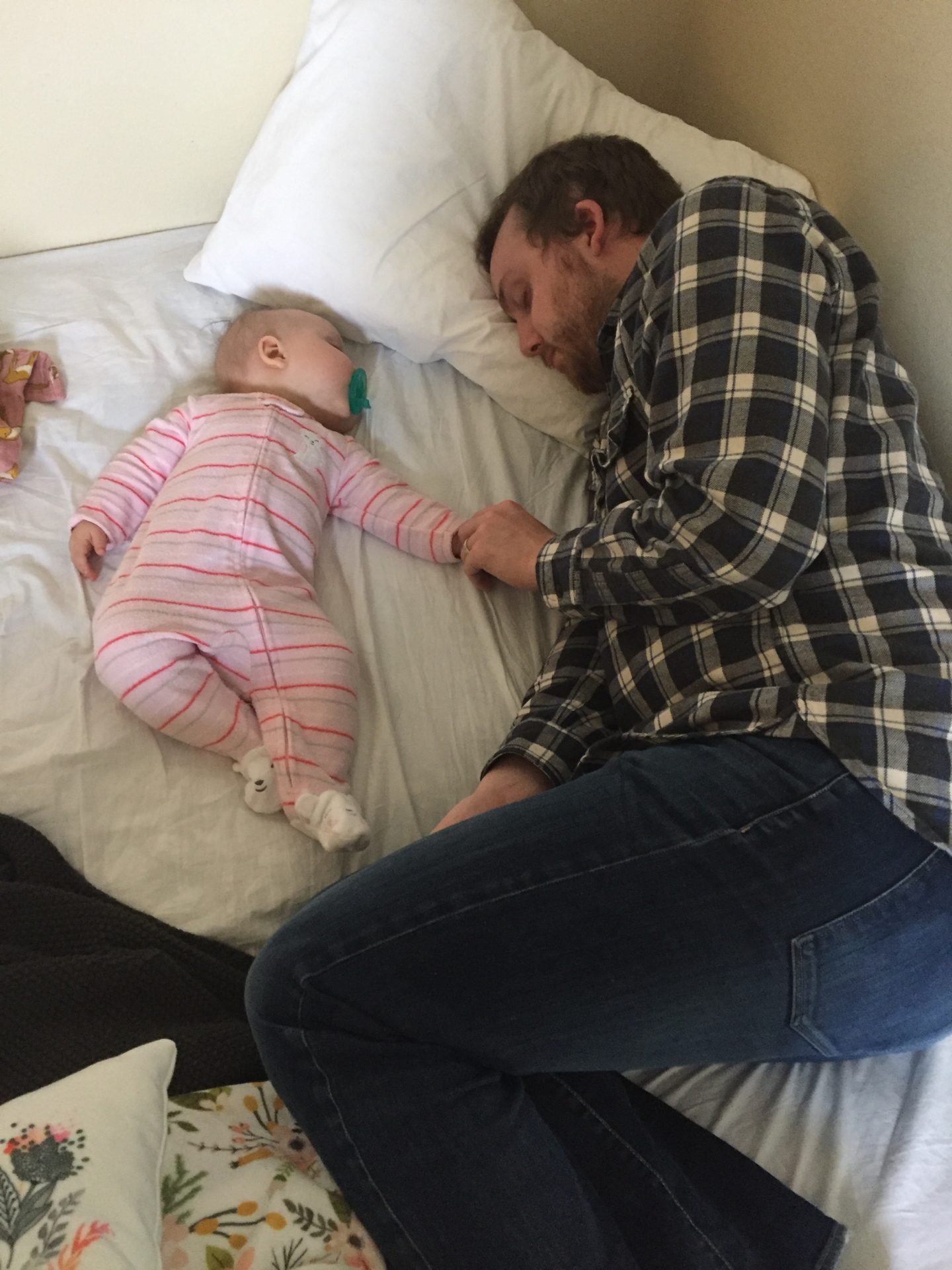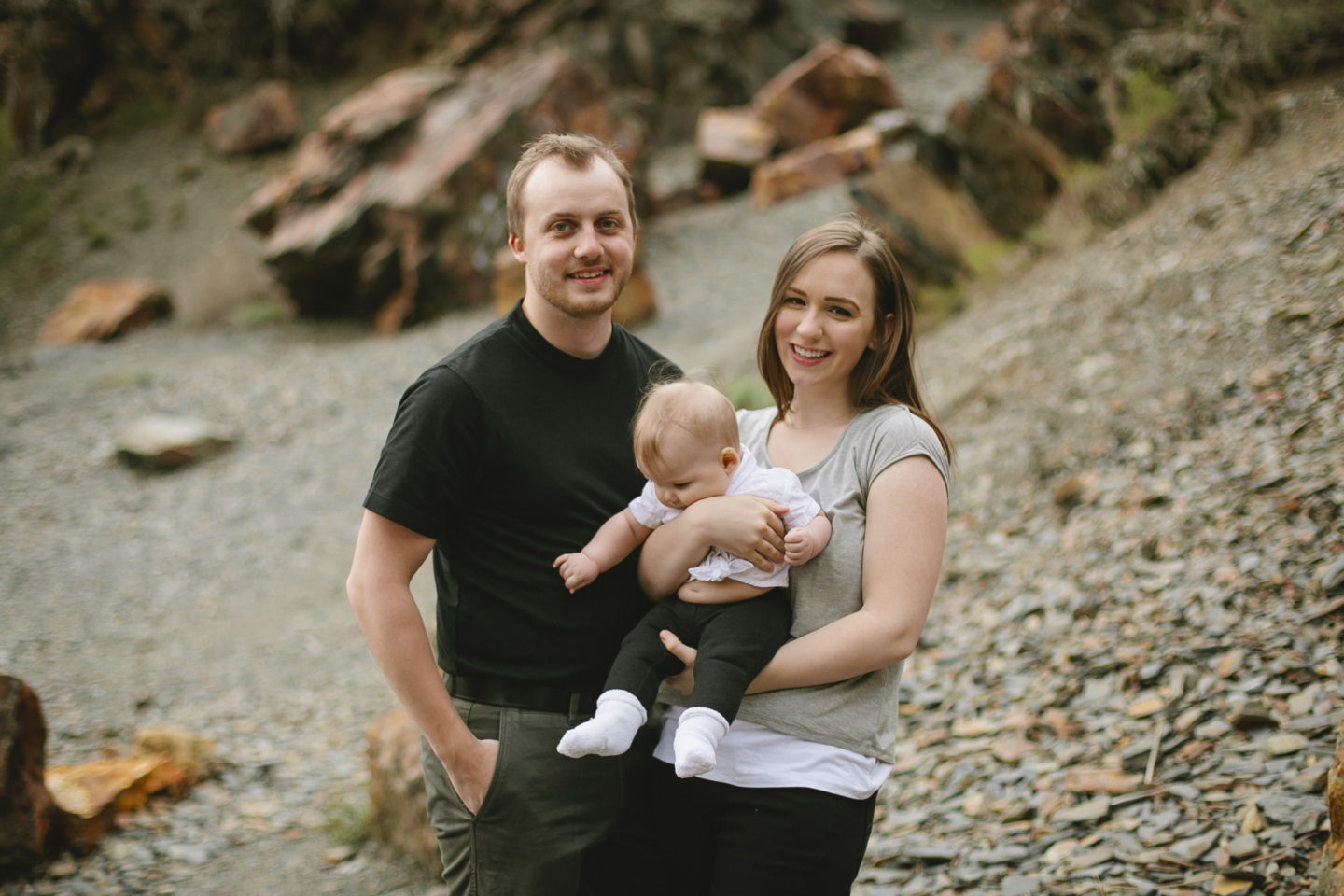
A large portion of this blog is dedicated to parenting—because it’s the majority of my life, and we put in a lot of work to figure out what we want to do, and what we think is best for our family. Sharing our solutions is my way of spreading the goodness we’ve found. It can be so difficult to navigate parenting choices, especially when what you’re looking into isn’t the most mainstream approach.
Though I have lots of posts on what we do, what exactly is our parenting style? Well, it’s a mix of a few different approaches.
These methods can overlap in serval areas, so I will be highlighting what makes each unique in relation to each other. (Keep in mind, this is an explanation of our family’s practices, not an open discussion. Everyone makes their own parenting choices, and, if thoughtfully chosen, I find they aren’t persuaded.)
Attachment Parenting – The focus of this style is promoting strong, healthy bonds between children and their caretakers. Basically, we believe the first few years of our child’s life is incredibly formative, and thus it’s important to ensure that they feel secure. Secure attachment yields less anxiety, and other mental health issues later in life. When our child cries for us, we meet her need for comfort immediately, and we never leave her to cry, especially in a drop-off situation. This doesn’t prevent her from becoming independent, rather it fosters independence. Attachment-parented children, studies have shown, are actually more independent earlier, and are better adjusted later in life. You can’t leave a child to cry alone in an unfamiliar situation—especially because they are literally developmentally incapable of processing things the way adults do—and expect that to make them resilient. It makes them scared, and clingy, and distrustful. Only positive discipline is used, as threats are seen as useless, and can even breach trust if we are misunderstanding the situation.
In a lot of ways, it can boil down to simply responding to all your child’s needs lovingly, and promptly, as well as doing activities that strengthen your connection to each other.
Though not implemented in all attachment-parented homes, we babywear, which promotes bonding, and allows the child to explore the world for a place they feel secure. We’re also very open about how we co-sleep. For us, it was just the right solution for our child. However, there are lots of studies showing the health benefits of sleeping next to someone you love (even as adults), as well as how comforting it is for children to sleep with their parents. Basically, if your child feels safe (which they feel when with a caretaker), they can put all their energy into developing well, instead of putting energy into anxiety. ‘Extended’ (the world average is actually 4 years) breastfeeding falls into this category, too. Our toddler breastfeeds for many reasons, not just to snack or get a drink, though she does do that. It’s the best way to settle her to sleep, and very clearly her greatest comfort when she’s upset, scared, or hurt.
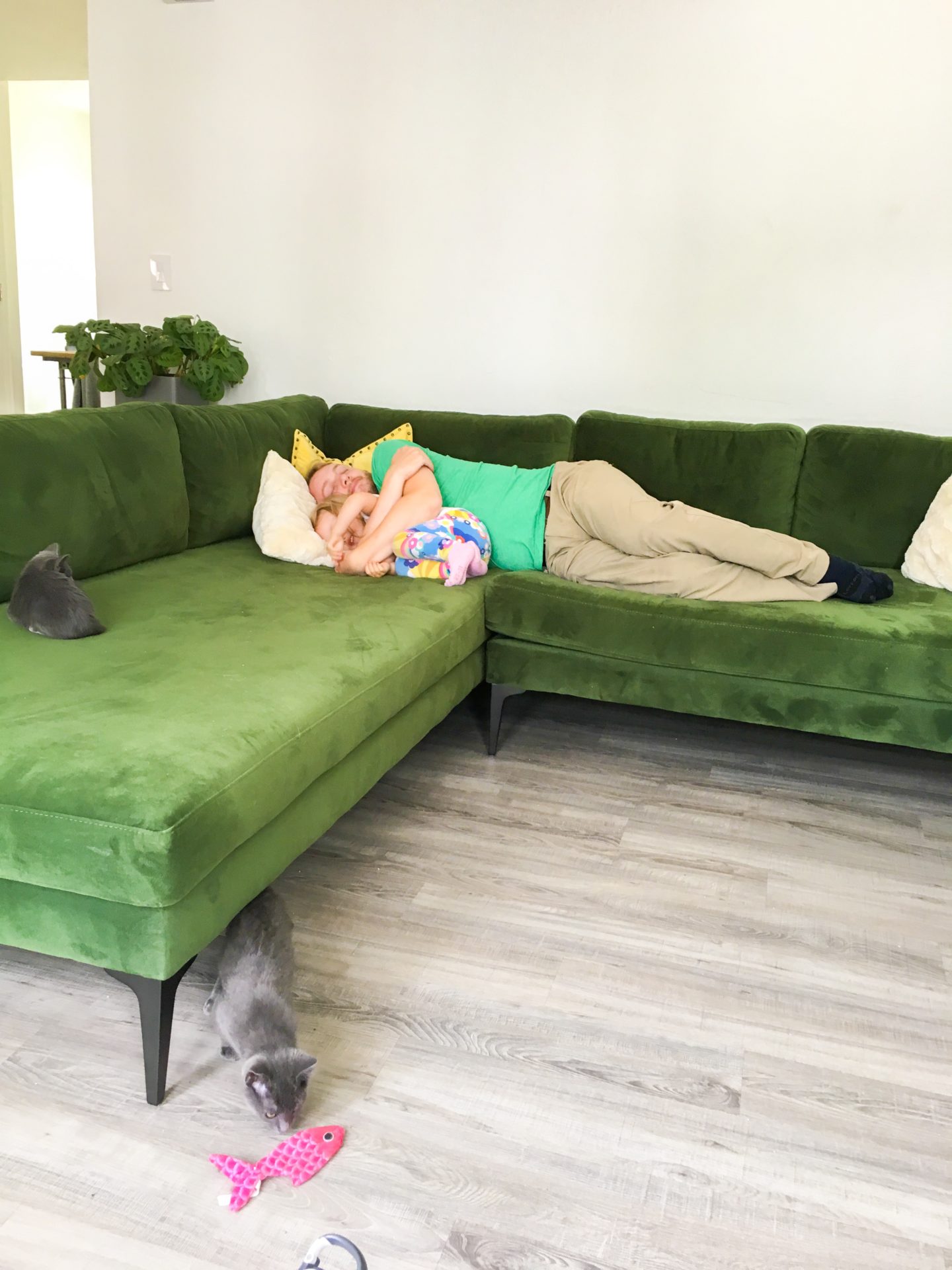
snuggles together 
talking it out
Gentle Parenting – This method is very similar to attachment parenting, but focuses more on the communicative side of things. We see the child as a person first, instead of a ‘mere child’. We work together to find solutions that work for everyone in our family. And, yes, this means parents must work themselves around the child’s developmental needs. Children are not seen as ‘manipulative’ or ‘bad’, but rather experiencing emotions, as we all do. If they are having a tantrum, it’s because there is something bothering them. In these situations, what they need is connection, and reassurance. We try to make our conversations deeper than just ‘good job’, because that type of praise doesn’t result in a growth-mindset, and is often totally unnecessary (how many times has someone else said ‘good job’ to your child over something entirely pointless, like a toddler finding a stick?)
Though trying to stay calm, and collected, and understanding can be difficult (and, at times, very, very difficult), we know that it’ll set up the way our child responds to stressors in her life later. To us, it’s worth going the extra mile to ensure that she’s set up for that success—we’re certainly not perfect at it, though.
That doesn’t mean that parents are neglected. Everyone in the family has needs, and we have to work together to make sure everyone’s needs are met. Children may have louder needs, but we try to strike a balance.
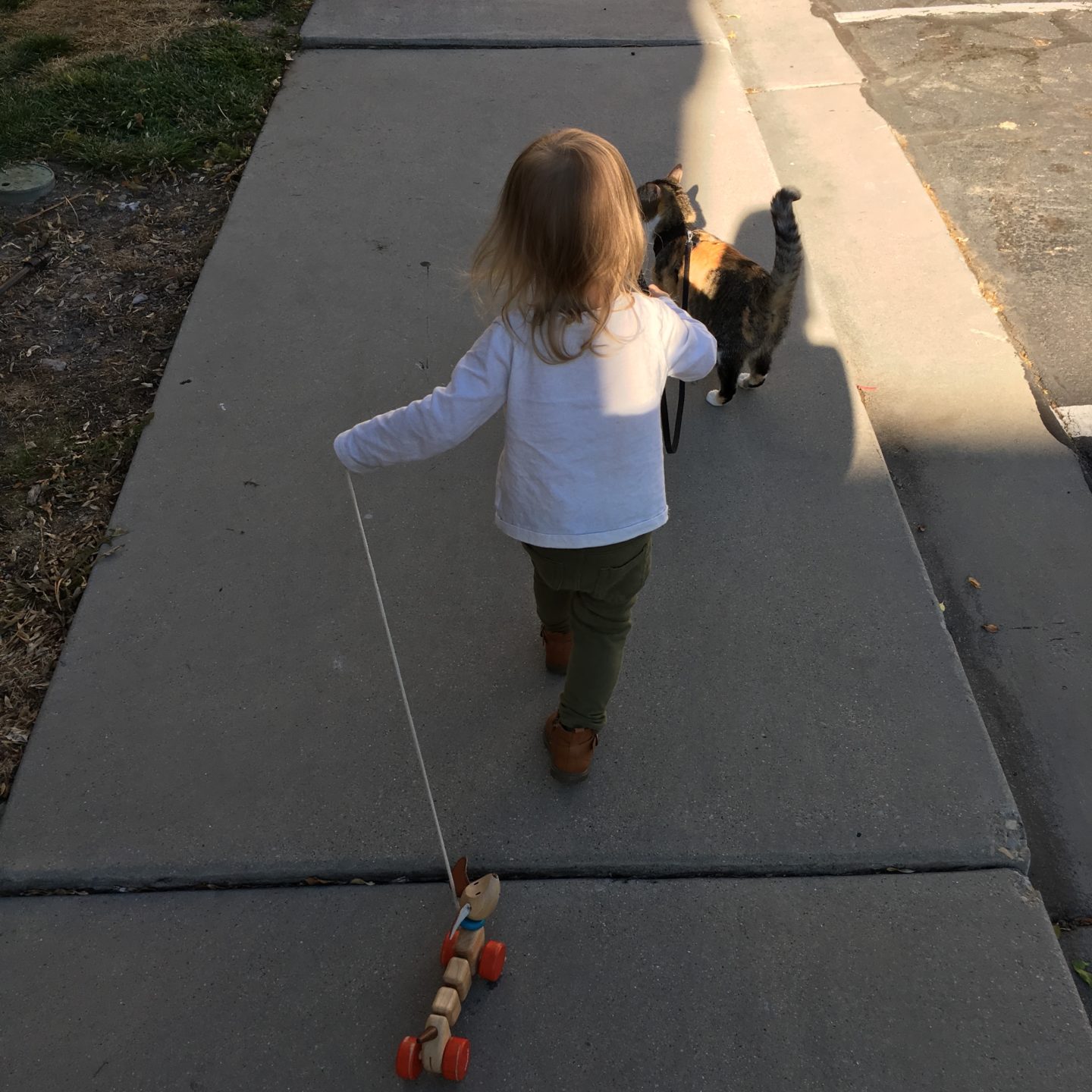
cat walking 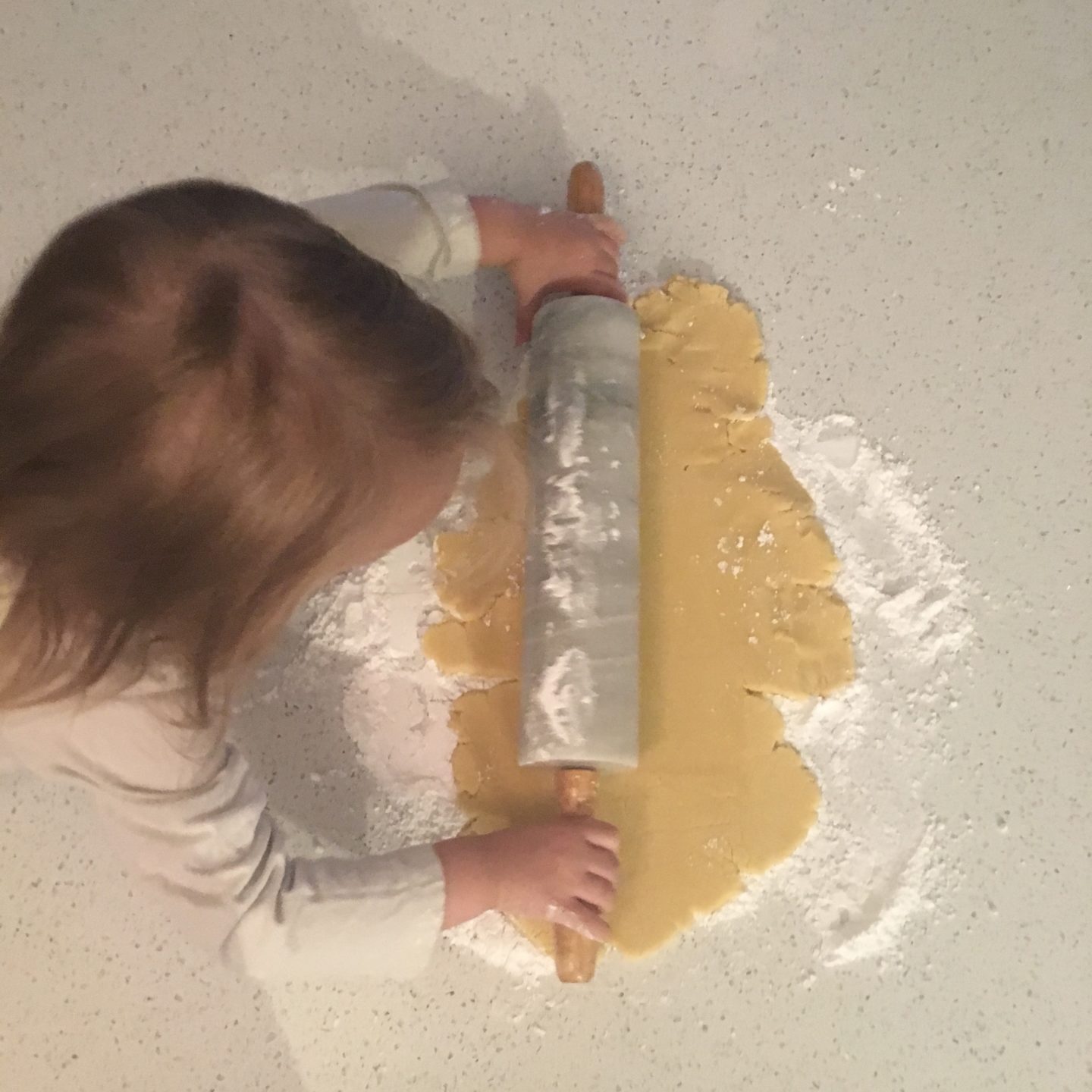
baking
Montessori – This approach is focused on independence, and helping your child integrate well into their life. “Child-led” or “follow the child” are the biggest concepts here. Basically, we set up environments that allow our child to learn and grow on their own. Montessori rejects noise-making and flashing toys, as they are often not much more than pressing a button. Instead, we opt for ‘natural’ toys, or toys that allow them to explore their motor skills (such as putting shapes into a shape sorter), and other ideas. They are able to focus on their play, instead of just being mesmerized by lights and sounds. This slower-paced space to play fosters imagination, and inventiveness.
We also try to let her make decisions for herself (obviously, within reason). What clothes would she like to wear? Which direction would she like to go? Allowing children to make choices, where appropriate, gives them confidence in themselves, and their abilities (plus, who wants to just force your child to do things all the time, and constantly say, “No?”)
Real-life involvement is a big part, too. We have a learning tower—a step stool that allows her to reach kitchen counter height—so she can observe, and also help us with food preparation. When working on projects, we try to give her tasks that she can handle. This allows her to feel involved in something with us, but also teaches her how to do practical life skills. Also, when she was a baby, we refrained from ‘baby talk’, and we try to talk to her as we would anyone else. Her vocabulary is great, and kids honestly understand a lot more than we often give them credit for.
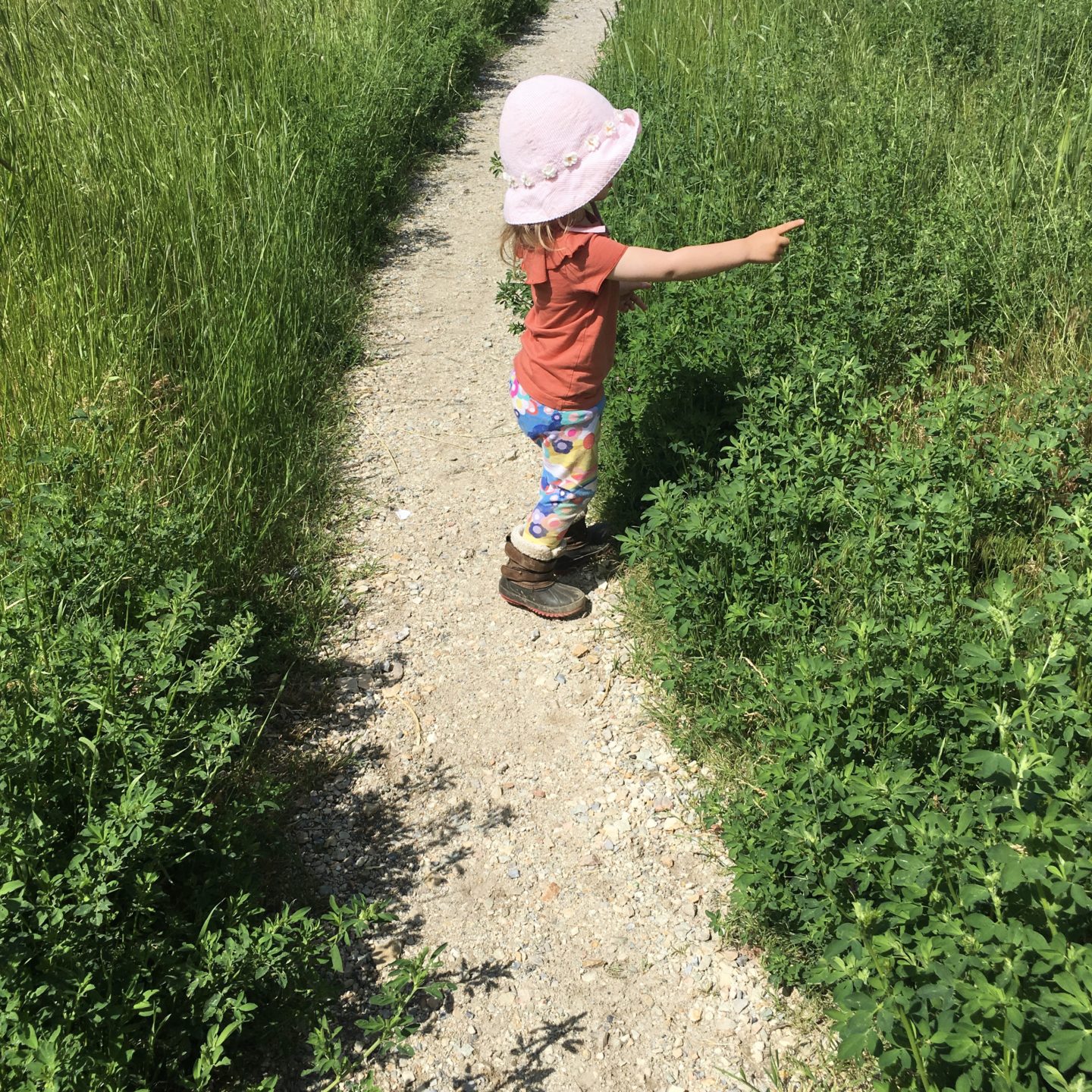
that way! 
exploring new places
Nature-focused – You can call it wild schooling, unschooling, or time in the great outdoors. Either way, for us, it means that we try to get in a minimum amount of outdoor time a week. It’s not always fun or convenient, as parents, but the benefits of outdoor time for kids (and adults, actually) is so overwhelming that we make it a priority. Being outdoors allows kids a space where they can run around, and not worry about breaking things. It’s allowed our daughter to test her limits, and learn how to be smart and safe in nature. She’s also got tremendous balance and coordination that I believe is mostly a result of her time outside. It allows us to connect to the earth, and to experience a wide range of textures, colors, shapes, sounds, and smells. It calms the mind, and heals the soul. Definitely worth making a priority.
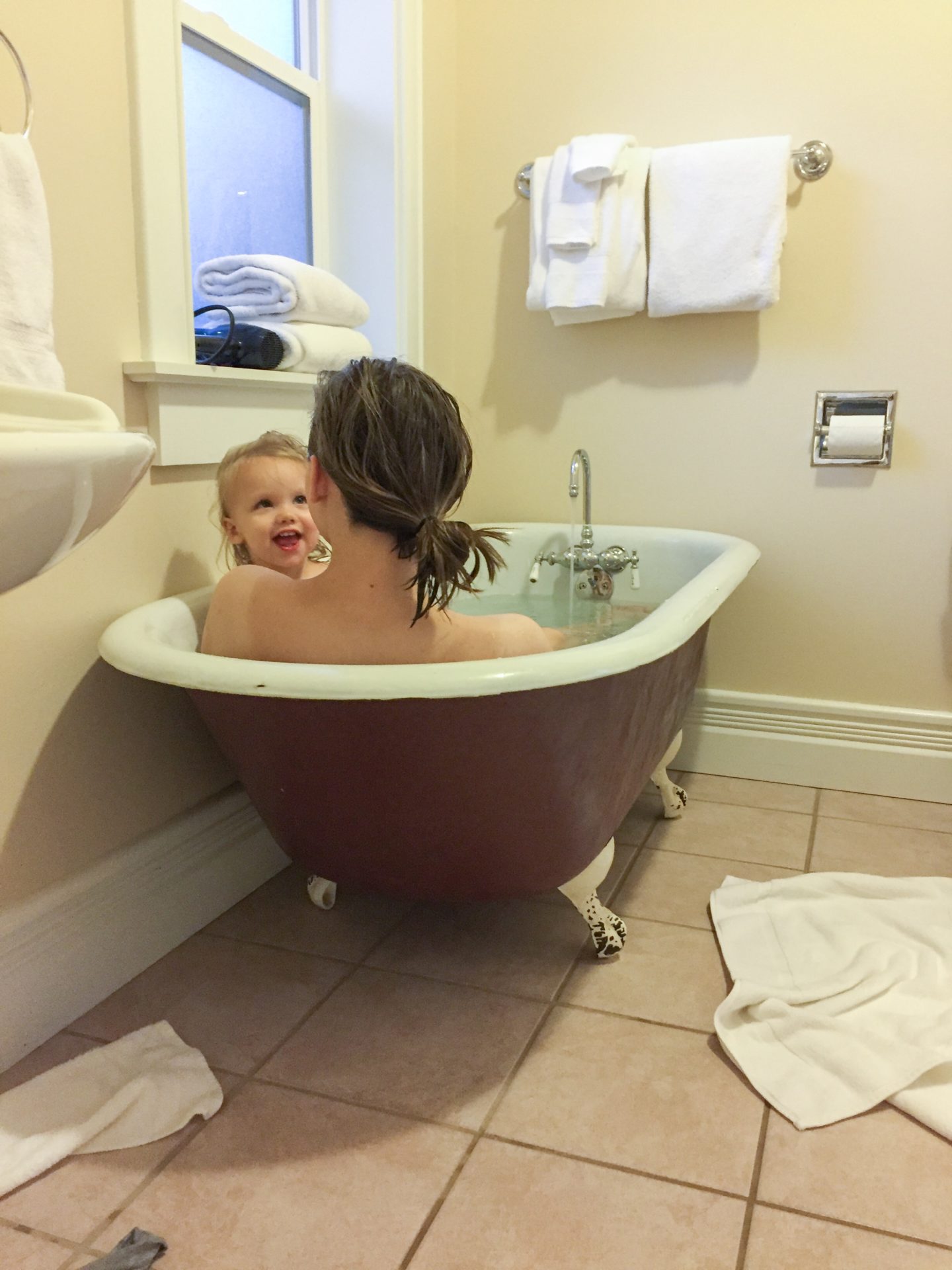
reconnecting after a long day 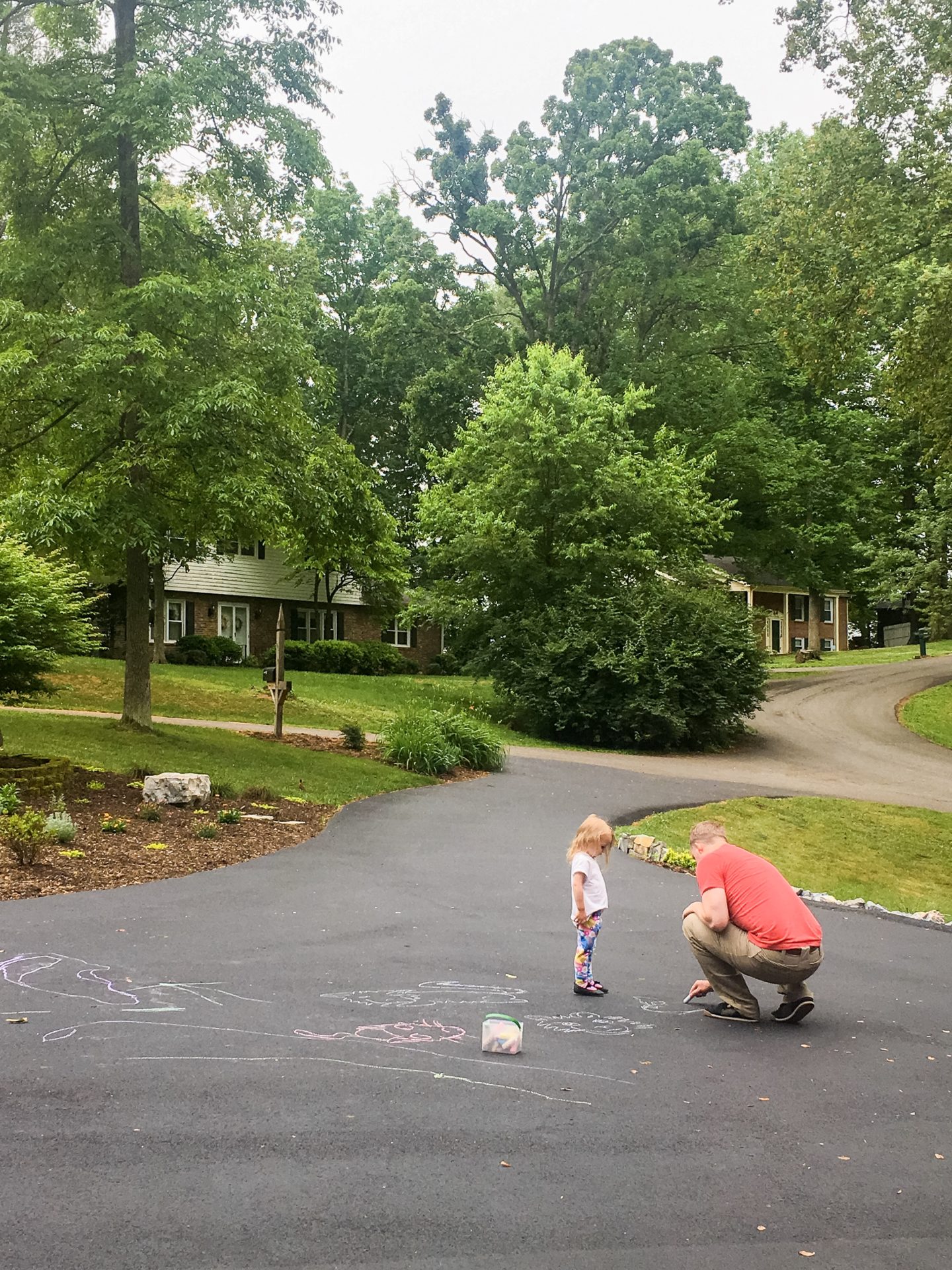
morning chalk drawings
Simplicity/Minimalism – Lastly, we have an approach that, though has been largely influenced by the book Simplicity Parenting, is not really a specific method. With this, we limit the number of toys in our home. This allows for deeper and more imaginative play, but it also allows our daughter to be responsible for her own things—she can tidy them herself, and isn’t overwhelmed with choices. As much as possible, we try to balance our schedule so that we’re not constantly running around. We take time to be together, and try our best to make things manageable and slow where possible. Screen time is also heavily limited, and we will actively choose to have periods of down time (like not listening to music in the car sometimes). Boredom foster imagination and inventiveness; and the ability to just be is a disappearing, yet vital, past-time.
That’s our parenting style in a nutshell. To some, it might seem like a lot of effort. And it is. I was told by people who practice all different kinds of parenting practices that parenting was about sacrifice. I do really think it is about self-sacrifice. But the sacrifice should be our selfish tendencies, and our poor habits, so that we can step up and be what our children really need, and model proper behavior to them.
The positive results we’ve seen have encouraged us to stick to our parenting style when things get a bit rough, as they occasionally do. With our first, we have seen a high-needs baby transform into a confident, imaginative, secure, loving, observant, very intelligent toddler. We think we’ve improved (as parents, and also just as people) over the last 3 years, and are excited to welcome our little boy into our family, and implement these practices even better.
If you follow any of these parenting methods, feel free to share the impact you’ve seen your own family!
